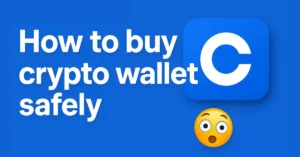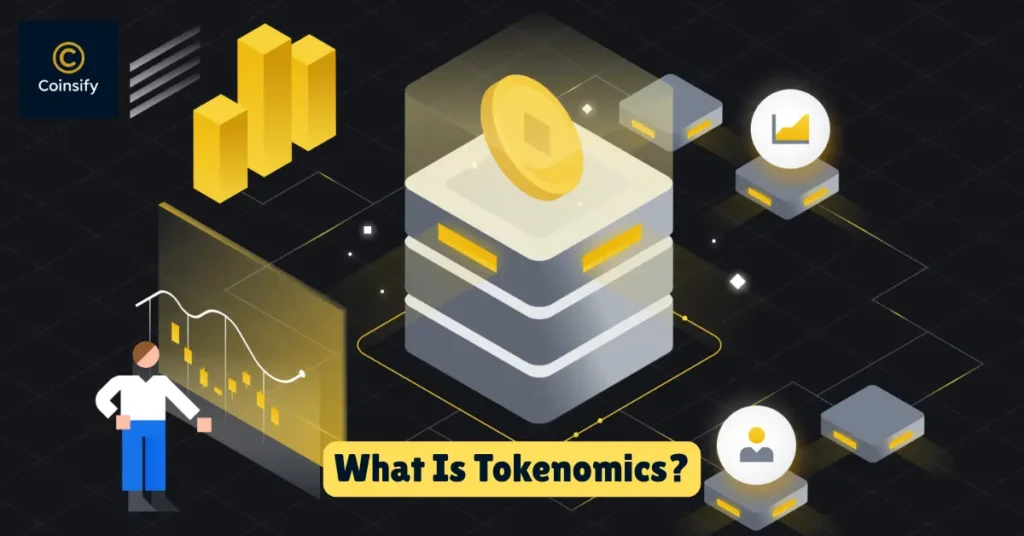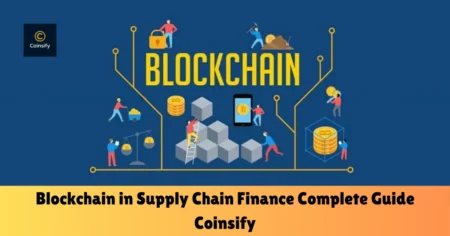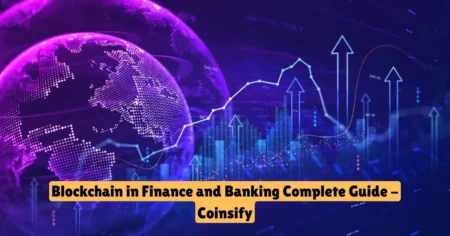Introduction
As cryptocurrencies continue to reshape the financial landscape, more people are becoming curious about how digital assets work—and what gives them value. While much of the attention goes to price trends and new tokens hitting the market, there’s a deeper layer that investors and enthusiasts should understand: tokenomics.
Tokenomics is a fundamental concept that explains the economic structure behind a cryptocurrency. It’s not just about how many tokens exist or what they’re worth today; it’s about the long-term mechanics that support a project’s growth, value, and sustainability.
In this article, we’ll explore what tokenomics really means, why it matters, and how it affects the success or failure of crypto projects. Whether you’re new to the space or looking to deepen your knowledge, this guide will help you grasp the essentials of tokenomics in a simple and practical way.
What Is Tokenomics?
Tokenomics is a combination of two words: “token” and “economics.” It refers to the economic system behind a cryptocurrency or blockchain-based project. In simple terms, tokenomics explains how a token is designed, distributed, used, and managed within its ecosystem.
Just like traditional economies have rules about how money is created, spent, and controlled, cryptocurrencies follow their own set of economic rules—this is what tokenomics covers.
Tokenomics includes everything from how many tokens exist (supply), how they are distributed to users (allocation), how they’re used (utility), and what incentives are in place to hold or spend them. These factors help determine a token’s value, its stability, and its long-term growth potential.
In essence, tokenomics is the blueprint that helps a crypto project succeed. A strong tokenomics model can attract investors, build trust, and support a healthy, active community. On the other hand, weak or poorly planned tokenomics can lead to low adoption, market manipulation, or even project failure.
Key Components of Tokenomics

Understanding tokenomics means looking at several core elements that shape how a cryptocurrency operates. These components define how a token is structured, how it behaves in the market, and what role it plays in its ecosystem.
Here are the key components of tokenomics every crypto user or investor should know:
Token Supply
Supply plays a major role in determining a token’s scarcity and potential value. There are three important types of supply to understand:
- Total Supply: The number of tokens that exist, including those not yet released.
- Circulating Supply: Tokens currently available and being traded in the market.
- Maximum Supply: The highest number of tokens that can ever be created.
A limited or capped supply can create scarcity, which may increase the token’s value over time.
Token Utility
Utility refers to how a token is used within its ecosystem. The more useful a token is, the more demand it can generate.
Common use-cases include:
- Paying for transaction fees
- Accessing platform features or services
- Participating in governance or voting
- Staking to earn rewards
A token with real-world or platform-specific utility often has stronger long-term potential.
Distribution Model
This defines how tokens are introduced and shared among users. A fair and transparent distribution helps build trust and reduce the risk of manipulation.
Distribution methods may include:
- ICOs (Initial Coin Offerings)
- Airdrops
- Private/Public Sales
- Mining or Staking Rewards
It’s important to know who gets how much and when, as this affects price stability and market behavior.
Inflation and Deflation Mechanisms
Some cryptocurrencies increase their supply over time (inflationary), while others reduce it (deflationary).
- Inflationary Tokens: New tokens are regularly created, often to reward participants (like miners or stakers).
- Deflationary Tokens: Tokens are “burned” or permanently removed from supply, increasing scarcity.
Both models have pros and cons, depending on how they’re implemented and what the project aims to achieve.
Token Governance
Governance refers to how decisions are made within the ecosystem. In many decentralized projects, token holders can vote on:
- Protocol upgrades
- Allocation of funds
- Rule changes within the platform
This democratic approach gives users more control and encourages active participation in the community.
These components work together to create a balanced and sustainable token economy. When designed thoughtfully, tokenomics can drive demand, reward users, and ensure the long-term health of a crypto project.
Why Tokenomics Matters in Crypto Projects
Tokenomics is not just a technical term—it’s one of the most critical factors that determine whether a crypto project will succeed or fail. Without a solid tokenomics model, even a promising idea or advanced technology can struggle to gain traction or hold long-term value.
Here are the main reasons why tokenomics plays such an important role:
Builds Investor Confidence
- When a project has clear, well-structured tokenomics, it signals transparency and professionalism. Investors are more likely to support projects where they understand how the token works, how it’s distributed, and what long-term value it offers.
Drives Demand and Utility
- Good tokenomics ensures the token has a purpose. Whether it’s used for transactions, accessing features, staking, or voting, real utility creates ongoing demand. Higher demand usually leads to better price performance and user adoption.
Maintains Market Stability
- Projects with poorly managed token supply can suffer from inflation, price crashes, or manipulation. A well-balanced tokenomics model helps maintain price stability, avoids excessive token dumps, and protects long-term holders.
Encourages Community Participation
- Tokens that include governance rights or staking rewards create incentives for users to stay active in the ecosystem. This builds a strong, engaged community—which is vital for the growth and sustainability of any crypto project.
Supports Project Longevity
- Tokenomics also defines how a project will be funded over time. With smart allocation and reward systems, projects can continue to develop, market, and improve their platform without running out of resources.
In short, tokenomics acts as the foundation of any blockchain-based project. It influences behavior, motivates users, and provides the economic tools necessary for a token to succeed in a competitive and fast-moving market.
Real-World Examples of Tokenomics
To understand how tokenomics works in practice, it’s helpful to look at some well-known cryptocurrencies and how their tokenomics have contributed to their growth, value, and community trust.
Bitcoin (BTC)
- Supply Model: Fixed maximum supply of 21 million coins.
- Inflation Control: New Bitcoins are released through mining, but the reward halves every four years (called “halving”), making it more scarce over time.
- Effect: Scarcity and predictable issuance have helped position Bitcoin as “digital gold” and a long-term store of value.
Ethereum (ETH)
- Utility: ETH is used to pay for gas (transaction fees) on the Ethereum network.
- Recent Change: With the transition to Ethereum 2.0 and the introduction of EIP-1559, part of the transaction fees are burned, reducing total supply over time.
- Effect: These changes introduced a deflationary mechanism, improving ETH’s long-term value proposition while reducing inflation pressure.
Binance Coin (BNB)
- Use Cases: Used for trading fee discounts on Binance Exchange, token sales, travel bookings, and more.
- Burn Mechanism: Binance conducts regular “burns” of BNB tokens using profits, reducing overall supply.
- Effect: Token burns create scarcity, which can positively influence price and demand.
Uniswap (UNI)
- Governance Token: UNI allows holders to vote on protocol changes and governance decisions.
- Distribution: A portion of tokens was airdropped to early users, while others are reserved for the development team and future use.
- Effect: Encourages decentralization and community involvement while ensuring long-term funding.
Dogecoin (DOGE)
- Inflationary Supply: Unlike Bitcoin, Dogecoin has no supply cap. Approximately 5 billion DOGE are added to the supply every year.
- Effect: Its unlimited supply and fun branding make it more suitable for tipping and casual use rather than long-term holding or store of value.
These examples show that each project designs its tokenomics based on its goals, audience, and vision. Whether it’s through scarcity, utility, rewards, or governance, strong tokenomics helps a crypto project create value and build trust in the long run.
How to Evaluate Tokenomics Before Investing

Before putting your money into any cryptocurrency, it’s important to look beyond the hype and marketing. One of the smartest ways to assess the potential of a crypto project is by analyzing its tokenomics.
Here are key factors to consider when evaluating tokenomics before making an investment:
Read the Whitepaper Carefully
The project’s whitepaper is the most detailed source of information. It should clearly explain:
- The total and circulating supply
- Token distribution plans
- Use cases and utility
- Reward systems and governance
If the whitepaper is vague, overly technical, or avoids specifics, that’s a red flag.
Check Token Supply Details
A token’s supply strategy affects its scarcity and value. Ask yourself:
- Is there a maximum supply cap?
- How many tokens are already in circulation?
- Will the supply increase over time (inflationary) or decrease (deflationary)?
- How will new tokens be released?
Projects with transparent and well-managed supply models are generally more stable.
Understand the Token Utility
Does the token have a real purpose? You want to invest in tokens that are actually used for:
- Transactions or fees
- Accessing services or features
- Staking or earning rewards
- Voting or governance
Tokens with no strong use-case may struggle to maintain demand in the long run.
Analyze Token Distribution
Study how tokens are allocated among the team, early investors, the public, and the community.
- Is the distribution fair?
- Are there lock-up periods for team or investor tokens to prevent early dumping?
- What percentage is reserved for future development or rewards?
Unbalanced or poorly planned distributions can lead to price volatility or manipulation.
Look Into Governance and Control
Check whether the project is centralized or decentralized in decision-making.
- Who controls upgrades or major changes?
- Do token holders get a say in governance?
- Is the decision-making process open and transparent?
Decentralized governance adds credibility and empowers the community.
Evaluate the Incentive Structure
Good tokenomics should reward users and encourage participation through:
- Staking rewards
- Yield farming
- Governance benefits
- Long-term holding incentives
If the project only rewards early adopters or insiders, it might not be sustainable.
Research the Team and Community
Even with solid tokenomics on paper, execution is everything. Look for:
- A credible and experienced development team
- An active and engaged community
- Regular updates and communication
Strong leadership and community support can be just as important as the tokenomics model itself.
Frequently Asked Questions (FAQs) About Tokenomics
What does “tokenomics” mean in crypto?
Tokenomics stands for token + economics. It’s the study of how a cryptocurrency token works — including how it’s created, used, distributed, and managed in its ecosystem.
Why is tokenomics important for a crypto project?
Tokenomics helps decide whether a token will grow in value, stay stable, or fail. It plays a big role in attracting investors, rewarding users, and building trust in the project.
How does token supply affect price?
If a token has limited supply, it can become more valuable as demand increases (like Bitcoin). If it has unlimited supply, it may lose value over time unless there’s strong demand or other mechanisms to control inflation.
What is token utility?
Utility means how a token is used. Good tokens have real purposes, like paying fees, staking, voting, or accessing features. If a token has no use, it may not be valuable in the long run.
What’s the difference between circulating supply and total supply?
Circulating Supply is the number of tokens currently available in the market.
Total Supply includes all tokens that exist, including those not yet released.
Some tokens are locked for future use or team rewards.
What are deflationary and inflationary tokens?
Deflationary tokens reduce supply over time (e.g., through burning).
Inflationary tokens increase supply regularly (e.g., through mining or staking rewards).
Each model has pros and cons depending on how it’s used.
How can I know if a project has good tokenomics?
Look for clear details in the whitepaper about:
- Token supply and limits
- Distribution plan
- Utility and use-cases
- Rewards or incentives
- Governance and decision-making
A transparent, fair, and balanced tokenomics model is usually a good sign.
Can tokenomics protect against scams or rug pulls?
Good tokenomics can reduce risk, but it’s not a guarantee. Always check who controls the tokens, how they’re distributed, and whether there are lock-up periods for the team or investors.
Does tokenomics affect long-term investing?
Yes. If you’re investing for the long term, strong tokenomics can help ensure the token keeps its value, has steady demand, and grows with the project.
Where can I learn more about a token’s tokenomics?
Start with the project’s whitepaper, visit their official website, check blockchain explorers (like Etherscan), and follow trusted crypto news sites for updates.
Conclusion
Tokenomics is the backbone of any successful crypto project. It helps decide how a token works, what it’s used for, and whether it can grow in value over time. Before investing in any cryptocurrency, always take time to understand its tokenomics. A clear, fair, and well-planned model often means the project is built for the long run.
Understanding tokenomics doesn’t need to be complicated—just start with the basics, ask the right questions, and make informed choices.
Also read
- What is a Crypto Wallet and How Does It Work? – Coinsify
- 10 Crypto Terms Every Beginner Must Know – Coinsify
- What is Blockchain Technology – Complete Guide – Coinsify
- How to Buy Crypto Safely in 2025 – Complete Guide – Coinsify
- Bitcoin vs Ethereum: Key Differences Explained – Complete Guide
- Ultimate Blockchain Glossary: Learn Blockchain Terms Easily
- How to Buy Bitcoin Safely (Complete Beginner’s Guide)
- Top 10 Crypto Wallets for Beginners (2025 Edition)
- What is Cryptocurrency? A Beginner-Friendly Guide (2025)






